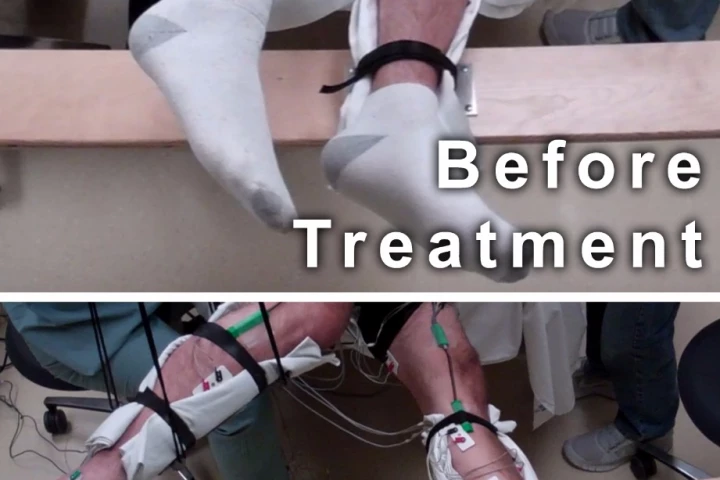Transcutaneous Electrical Nerve Stimulation
-
Engineers at ETH Zurich have developed a wearable system that can help patients regain movement and mobility after a stroke. The system consists of a motion-sensing watch and an earpiece that zaps a nerve to help rewire neural circuits.
-
Electrical spinal stimulation can help paralyzed people walk again. In a promising new clinical trial, scientists have identified the specific neurons being stimulated, and found that patients can still walk even after the implant was turned off.
-
Could the future of rheumatoid arthritis treatment be a small implant designed to deliver bursts of electrical stimulation to a nerve that can regulate the body’s inflammatory reflex? Large clinical trials testing several implants are already underway.
-
In a new study, occipital nerve stimulation has been found to reduce the frequency and severity of headaches in patients suffering chronic cluster headaches, and the results suggest low doses of electrical stimulation are as effective as high doses.
-
Although the causes of chronic indigestion aren't entirely understood, the condition typically involves the stomach not expanding and contracting properly. New research now suggests that in-ear nerve stimulation could help remedy that situation.
-
Although conditions such as epilepsy can be treated via nerve-stimulating electrodes, those electrodes are stiff, costly and require surgery to implant. Scientists have now created an alternative, however, in the form of soft, injectable electrodes.
-
Electrical stimulation of the vagus nerve holds all kinds of possibilities in medical science, and scientists have now added another to the list by demonstrating how targeting it through the ear could help slow some of the effects of aging.
-
In a landmark study, researchers from Northwestern University and the Washington University School of Medicine describe a novel biodegradable implant designed to electrically stimulate damaged nerves, speeding up the healing process, before naturally dissolving into the body.
-
A new study describes progress in a groundbreaking technique that is helping paraplegic patients walk again. The experimental process, involving electrically stimulating the spinal cord, is proving increasingly promising as research works to improve the design of the treatment.
-
Although medication can help with motion sickness, it also causes side effects such as drowsiness. In a few years, however, there may be a preferable alternative ... which users would stick to their head.
-
Working with a team of UCLA scientists, a man with protracted and complete paralysis has recovered sufficient voluntary control to take charge of a bionic exoskeleton and take many thousands of steps.
-
Five men with complete motor paralysis regained the ability to move their legs voluntarily after being treated with a non-invasive form of spinal cord stimulation called transcutaneous electrical nerve stimulation, which involves strategically placing electrodes on the skin of the lower back.
Load More











